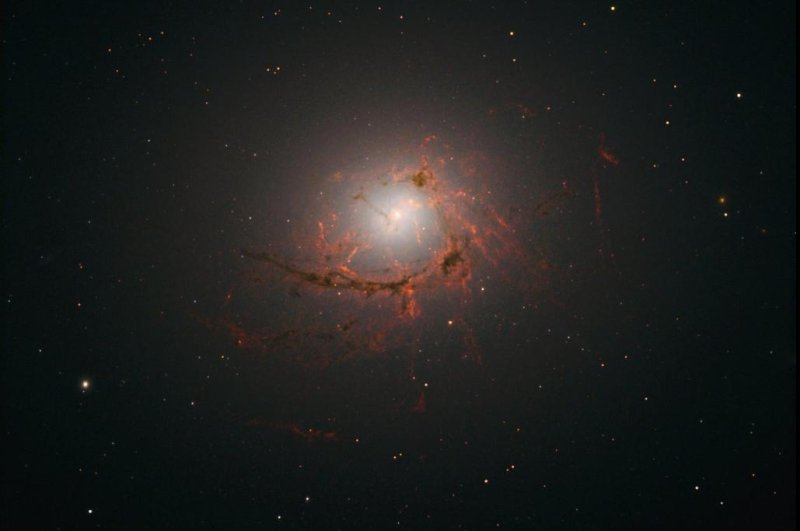CAMBRIDGE, England, Dec. 1 (UPI) -- The informal name for galaxy NGC 4696, the "Brightest Cluster Galaxy," is no joke. The elliptical galaxy outshines its companions -- number in the hundreds -- in the Centaurus galaxy cluster.
But the luminosity of NGC 4696 isn't its most intriguing feature. Astronomers are most interested in the galaxy's dark, thread-like filaments, which swirl about a ethereal, glowing core.















